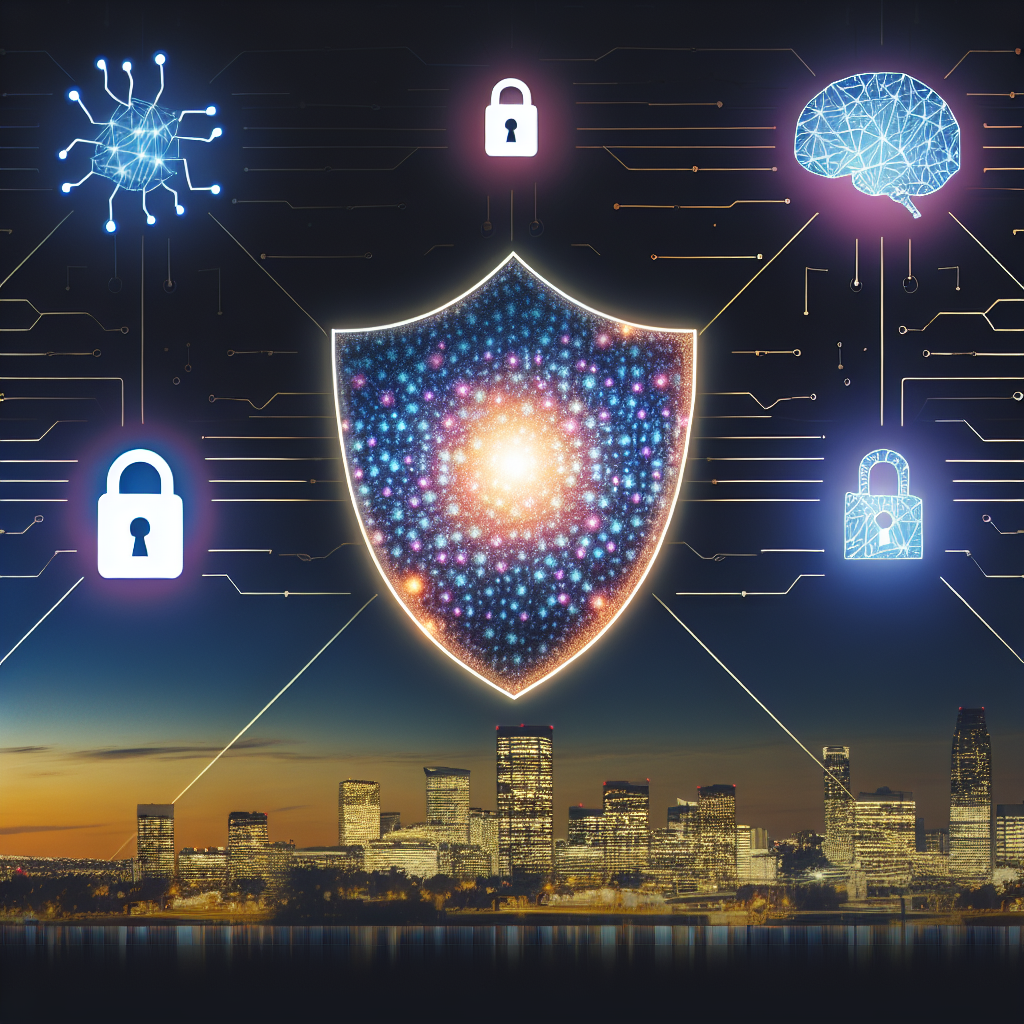Did you know that 88% of security leaders now consider AI essential for securing their digital assets? The intersection of artificial intelligence and cybersecurity represents one of the most significant technological advances in digital defense. I’ve spent years watching this transformation, and let me tell you – it’s nothing short of revolutionary! As cyber threats become increasingly sophisticated, AI is proving to be our most powerful ally in the fight against digital criminals.
Understanding AI’s Role in Modern Cybersecurity
Just as a vigilant security guard monitors a building, AI has become the tireless guardian of our digital assets. Today’s cybersecurity landscape has evolved dramatically from simple firewalls and antivirus programs to sophisticated AI-powered systems that can think, learn, and adapt. For instance, while traditional security systems might only block known malicious IP addresses, AI-based solutions can identify suspicious patterns in real-time, much like how an experienced detective spots unusual behavior.
Evolution of Security Systems
The journey from traditional to AI-powered security systems mirrors the evolution of car safety features. Just as we’ve progressed from basic seatbelts to intelligent collision detection systems, cybersecurity has transformed from simple password protection to complex behavioral analysis systems. Modern AI security solutions can process millions of events per second, something that would be impossible for human analysts.
Balancing AI’s Potential and Limitations
While AI brings remarkable capabilities to cybersecurity, it’s important to recognize its boundaries. Think of AI as a highly trained assistant rather than a complete replacement for human expertise. For example, while AI excels at detecting known patterns and anomalies, it may struggle with entirely new types of attacks, much like how a self-driving car might face challenges in unprecedented traffic scenarios.
Core AI Technologies in Cybersecurity
Machine Learning: The Digital Detective
Machine learning algorithms work like experienced cybersecurity analysts, but at an unprecedented scale. Similar to how credit card companies detect fraudulent transactions, these systems continuously learn from new data to identify potential threats. They can analyze patterns across millions of data points to spot suspicious activities that might escape human notice.
Natural Language Processing in Security
NLP has revolutionized security analysis much like how Google Translate transformed language barriers. Security systems now can understand and analyze written communications, helping to identify potential phishing attempts or social engineering attacks. This technology can even analyze dark web communications to predict emerging threats.
Deep Learning’s Pattern Recognition
Deep learning in cybersecurity functions similarly to facial recognition technology, but instead of identifying faces, it identifies malicious code patterns and behavioral anomalies. These systems can detect subtle variations in network traffic that might indicate a breach attempt.
Real-world Applications and Use Cases
Automated Threat Response
Modern security systems now operate like an immune system, automatically detecting and responding to threats. For instance, when a potential ransomware attack is detected, AI systems can instantly isolate affected systems, much like how our bodies automatically fight off infections.
Predictive Analysis and Risk Assessment
Just as meteorologists use data to forecast weather patterns, AI-powered security systems predict potential cyber threats before they materialize. These systems analyze historical data and current trends to identify vulnerable areas and potential attack vectors.
Security Automation and Orchestration
Think of security automation like a well-coordinated symphony orchestra, where different security tools work together harmoniously. AI orchestrates these various security components, ensuring they work together efficiently to protect the organization.
Identity and Access Management
Modern AI-driven identity management works like an intelligent bouncer at an exclusive club, not just checking IDs but also monitoring behavior patterns to ensure only authorized personnel gain access.
Implementation Challenges and Solutions
Integration Complexities
Merging AI security solutions with existing infrastructure is like renovating a house while living in it – it requires careful planning and execution. Organizations must ensure new AI systems work seamlessly with legacy security tools.
Training and Expertise Requirements
Just as pilots need specific training for new aircraft systems, security teams require specialized knowledge to work with AI-powered tools. This often involves significant investment in training and development.
Cost and ROI Considerations
Implementing AI security solutions is similar to investing in premium insurance – there’s an upfront cost, but the long-term benefits often outweigh the initial investment. Organizations must carefully evaluate their specific needs and potential returns.
Future Trends and Developments
Emerging Technologies
The future of AI in cybersecurity is evolving as rapidly as smartphone technology. We’re seeing the emergence of more sophisticated neural networks and automated response systems that can adapt to new threats in real-time.
Quantum Computing Integration
As quantum computing advances, AI security systems are being developed to handle both current and future quantum-based threats. This preparation is similar to how cities plan infrastructure for future population growth.
Next-Generation Security Systems
The next wave of security systems will likely combine AI with other emerging technologies, creating more robust and intelligent defense mechanisms. These systems will be more proactive than reactive, potentially stopping attacks before they begin.
Conclusion
The integration of AI in cybersecurity isn’t just a trend – it’s a fundamental shift in how we approach digital security. As we’ve explored throughout this guide, AI is revolutionizing everything from threat detection to incident response. The future of cybersecurity will undoubtedly be shaped by continued advancements in AI technology. Ready to enhance your security posture? Start exploring AI-powered security solutions today!

